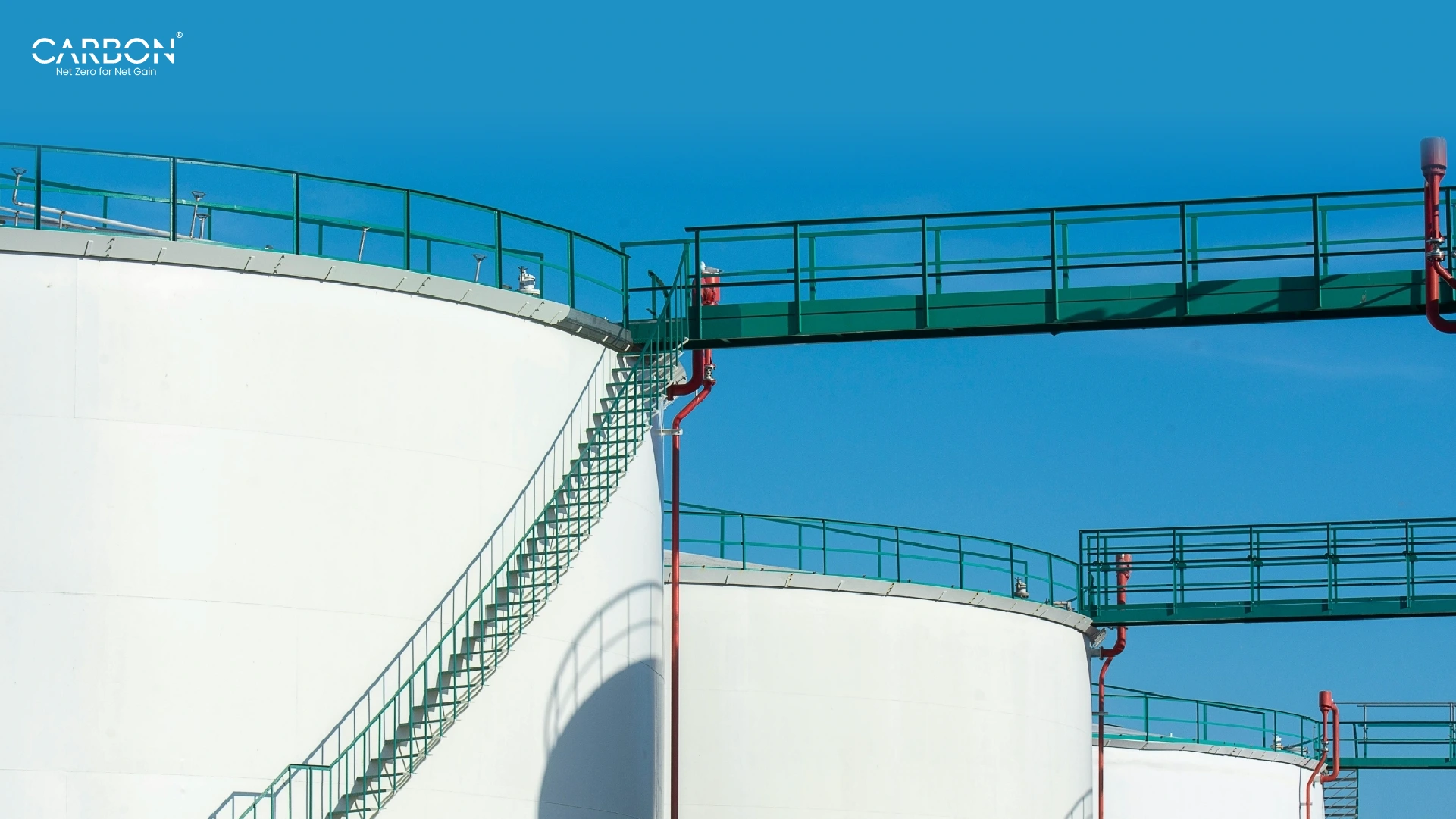Key Takeaways
• Predictive maintenance reduces unplanned downtime by 35-45% and cuts maintenance costs by 25-30%, saving millions annually
• Beyond obvious benefits, it delivers 15-20% energy savings and improves product quality through optimized equipment performance
• Real-time data enables smarter decision-making, aligning maintenance schedules with production needs for maximum efficiency
• Companies switching from reactive to predictive approaches see equipment lifespans extended by 20-30% with enhanced worker safety
• The technology pays for itself quickly. Most organizations see ROI within months, not years, making it essential for competitive advantage
Picture this: your production line goes dark at 2 AM on a Tuesday. The maintenance team scrambles. Operations panics. And while everyone’s running around with flashlights and clipboards, you’re burning through $2 million per hour.
That’s not a worst-case scenario. That’s Tuesday.
Manufacturers lose $647 billion globally every year to downtime [14]. For individual facilities, machine failures cost anywhere from $50,000 to $2 million per hour [15]. Those aren’t typos. Those are balance sheet killers.
But here’s what’s changed: the factories that win aren’t the ones with the biggest machines anymore. They’re the ones with the smartest ones.
Predictive maintenance flips the script entirely. Instead of waiting for equipment to die, you know exactly when it needs attention. The results? Unplanned downtime drops 35-45%. Equipment lives 20-30% longer. Maintenance costs fall 25-30% [16].
Think of it like this: reactive maintenance is calling an ambulance after the heart attack. Predictive maintenance is the fitness tracker that warns you about irregular heartbeats.
The numbers prove it works. One company saved $1 million in year one just by watching their energy consumption [17]. Another cut unexpected breakdowns in half through real-time monitoring [15]. This isn’t about avoiding problems anymore.
It’s about finding money you didn’t know you had.
Smart factories figured this out years ago. They stopped treating maintenance like a necessary evil and started treating it like a profit center. The companies still waiting for things to break? They’re playing yesterday’s game with tomorrow’s competition.
So let’s talk about why the maintenance rulebook just got rewritten. And more importantly, what that means for your bottom line.
The age of “fix it when it breaks” is over.
Why Smart Factories Are Moving Beyond Reactive Maintenance
Smart factories aren’t just abandoning reactive maintenance. They’re running from it.
And for good reason.
The limitations of reactive and preventive strategies
Here’s what reactive maintenance really costs you: emergency repairs run 3-4 times more expensive than planned maintenance [18]. You’re not just fixing problems. You’re treating symptoms while the disease spreads.
Organizations stuck in reactive mode spend their days fighting fires instead of preventing them [18]. Every breakdown becomes a crisis. Every repair becomes an emergency. And every emergency becomes a budget killer.
Preventive maintenance sounds smarter, but it’s still broken. You’re changing parts based on what a manual says, not what your equipment needs. It’s like taking medicine on a schedule instead of when you’re actually sick.
The waste is staggering:
- Parts get replaced while they’re still good
- Warehouses overflow with “just in case” inventory
- Production stops for maintenance that isn’t needed
How predictive maintenance fits into Industry 4.0
Here’s where the game changes completely.
Industry 4.0 demands more than just connected machines. It requires intelligent systems that think, learn, and adapt [3]. Predictive maintenance isn’t just part of this future. It’s the foundation.
The technology stack tells the story: Industrial IoT sensors feed data to machine learning algorithms that create “smart machines” with accuracy and consistency that humans simply can’t match [3].
Your equipment becomes its own diagnostic system. Sensors track vibration, temperature, pressure, and dozens of other variables in real time. The system learns what normal looks like. Then it flags anything that isn’t.
Think of it as giving your factory a nervous system.
What makes predictive maintenance different
The difference is fundamental: predictive maintenance monitors performance during normal operation to anticipate failures [2]. No more guessing. No more schedules. Just real data from real equipment telling you exactly when attention is needed.
This data-driven approach shifts maintenance from reactive scrambling to strategic planning [4]. The results speak for themselves: 35-50% less unplanned downtime and 20-40% longer asset lifespans [5].
But here’s the real win: you solve both problems at once. No more running equipment to failure. No more replacing healthy parts [2]. Just maintenance that happens exactly when it should.
The math is simple. The execution is smarter. And the payoff is immediate.
Ready to see what this looks like for your operation? Our ROI calculator shows exactly how predictive maintenance helps maximize savings through optimized scheduling and extended equipment life.
The Real Advantages of Predictive Maintenance in Manufacturing
Look, we could talk theory all day. But smart factories don’t switch maintenance strategies for the intellectual exercise.
They switch because the math is brutal.
1. Reduced unplanned downtime and production halts
Every hour your line goes dark costs approximately INR 21.9 million [6]. That’s a luxury car rolling off a cliff every sixty minutes.
Here’s the kicker: 82% of manufacturers face machine downtime at least once yearly [6]. Average outages last four hours and burn through INR 84.38 million in lost productivity [6].
Predictive maintenance changes the game entirely. Instead of scrambling when machines fail, you get advance warning. Companies report 35-45% reductions in downtime [7] because they’re fixing problems before they happen.
That’s not incremental improvement. That’s operational transformation.
2. Lower maintenance costs and emergency repairs
The financial impact hits immediately. Companies implementing predictive maintenance cut maintenance costs by 18-25% [8]. You’ll save up to 40% compared to reactive approaches [9] because you’re dodging emergency repairs that cost 3-4 times more than planned maintenance.
One automotive plant saved INR 9.45 million by catching alignment problems and worn bearings before catastrophic failure [10].
Think about that. They found nearly ten million in savings just by listening to their equipment.
3. Improved worker safety and compliance
Equipment failure kills people. It’s a leading cause of workplace injuries and fatalities [11]. In 2020, private industry reported 2.1 million nonfatal injuries [12].
Predictive maintenance calculates when critical assets might fail, forecasting and preventing dangerous conditions [13]. Your team stops being emergency responders and starts being strategic planners.
Safety isn’t about checking compliance boxes. It’s about everyone going home in one piece.
4. Extended equipment lifespan and asset ROI
Your machines represent massive capital investments. Predictive maintenance extends equipment lifespan by 20-30% [7], essentially giving you years of additional service from assets you’ve already paid for.
This approach optimizes maintenance intervals based on real-time condition data [14]. Components get replaced when they need it, not when a manual says so.
Ready to see how predictive maintenance transforms your operations? Book a demo with CarbonMinus to calculate your potential savings.
Hidden Benefits You Might Not Expect
Here’s what most people miss about predictive maintenance: the obvious benefits are just the tip of the iceberg.
Sure, you know about the downtime reductions and maintenance savings. But dig deeper and you’ll find money in places you never thought to look.
1. Energy efficiency and sustainability gains
Your equipment is bleeding money through the electrical meter. Every day.
Predictive maintenance cuts energy consumption by 15-20% [15]. That’s like getting every fifth kilowatt-hour for free. The math is simple: aging equipment burns more energy for the same output.
Want a reality check? Inefficient compressed air systems waste INR 270.02 billion annually [16] in the US alone. That’s not inefficiency. That’s a crime against your balance sheet.
One facility made adjustments based on real-time monitoring data and watched their energy bills drop 15% [17] overnight. That’s money you can reinvest in your business or maximize savings elsewhere.
The planet thanks you. Your CFO thanks you more.
2. Better inventory and spare parts planning
Spare parts inventory is expensive guesswork. Always has been.
Too little inventory and you’re paying emergency shipping fees that would make your accountant cry. Too much and you’re running a museum of expensive paperweights.
Predictive maintenance changes the game entirely. Instead of guessing when parts will fail, you know. Companies using these forecasting approaches slash inventory costs by 23-51% [18] compared to traditional methods.
No more midnight calls to suppliers. No more warehouse full of “just in case” parts collecting dust.
Our ROI calculator shows you exactly how much this precision planning saves your operation.
3. Enhanced product quality and consistency
Equipment that’s about to fail doesn’t just stop working. It makes garbage first.
Misalignments, temperature drift, subtle vibrations – your machines start producing defects long before they break down completely. Most quality control systems catch these issues after they’ve already hurt your bottom line.
Predictive maintenance catches them before they start. AI tools minimize defect rates [16] and keep product consistency tight. Your customers get better products. Your quality team gets fewer headaches.
Well-maintained equipment doesn’t just run longer. It makes better stuff while it runs.
That’s the difference between fixing problems and preventing them.
How Predictive Maintenance Enables Smarter Operations
Here’s where predictive maintenance stops being just a maintenance strategy and becomes the nervous system of intelligent manufacturing.
Most factories run on gut instinct and scheduled guesswork. Smart factories run on data that never lies.
Real-time data for better decision-making
Your equipment talks. The question is: are you listening?
Real-time data flows from every sensor, every vibration monitor, every temperature gauge [1]. That continuous stream creates something powerful: the ability to spot problems before they become disasters.
The proof is in the performance. Companies using these systems cut downtime by 30-50% [19] and slash maintenance cost savings of 20-40% [19]. Predictive maintenance saves 8-12% over preventive approaches and up to 40% over reactive maintenance [20].
But here’s the real shift: you stop managing equipment and start managing information.
Aligning maintenance with production schedules
The old way? Maintenance and production teams working in separate worlds, creating chaos throughout the supply chain [21].
The new way? Shared data. Integrated insights. Maintenance scheduled during planned downtime instead of emergency production halts [19].
Maintenance teams now use the PDCA model—Plan, Do, Check, Act—to fine-tune frequencies based on actual equipment needs [22]. No more guessing when machines need attention. No more production surprises.
What you get is operational harmony. Maintenance becomes part of the production flow, not a disruption to it.
Reducing waste and optimizing resource use
Predictive maintenance is sustainability’s secret weapon. It attacks waste at every level:
- Energy consumption drops 15-20% [1]
- Parts replacement becomes surgical, not shotgun [23]
- Oil waste disappears through proactive leak prevention [24]
- Labor and inventory get optimized [1]
This approach drives “green manufacturing” by eliminating emissions from inefficient machinery [1] and creating continuous improvement loops [24].
The result? Operations that don’t just run cleaner—they run smarter.
Want to enable smarter operations with predictive maintenance? Book a demo with CarbonMinus today and use our ROI calculator to see your potential savings.
What separates the winners from the losers in modern manufacturing?
Timing.
The companies that thrive aren’t the ones with the biggest budgets or the fanciest equipment. They’re the ones who saw the shift coming and moved first. Predictive maintenance isn’t just about fixing machines before they break.
It’s about rewriting the rules of industrial competition.
The math is brutal and beautiful: 35-45% less downtime, 25-30% lower maintenance costs, equipment that lasts 20-30% longer. But the real story isn’t in the percentages. It’s in what happens when your competitors are still playing catch-up while you’re already three moves ahead.
Energy efficiency delivers another knockout punch. A 15-20% drop in energy consumption doesn’t just support your sustainability goals. It puts cash back in your pocket that you can reinvest in staying ahead. Companies that maximize savings across operations understand this isn’t just about being green.
It’s about being profitable.
Your team deserves better than emergency repairs at 3 AM. Your customers deserve consistent quality. Your shareholders deserve predictable returns. Predictive maintenance delivers all three.
The competitive landscape just shifted. Companies still waiting for equipment to break are playing by yesterday’s rules. Meanwhile, smart factories are turning maintenance from a cost center into a profit driver. Our ROI calculator shows what most operations managers discover: payback periods measured in months, not years.
But here’s the truth that matters most: this isn’t about technology. It’s about competitive advantage. The factories that dominate tomorrow won’t be the ones with the most machines. They’ll be the ones with the smartest operations.
Your maintenance team becomes strategic planners instead of emergency responders. Your production schedule becomes predictable instead of reactive. Your bottom line becomes healthier instead of hemorrhaging cash.
The question isn’t whether you can afford predictive maintenance. It’s whether you can afford to let your competitors get there first.
The shift is happening. The only question is which side of it you’ll be on.
FAQs
What are the main advantages of predictive maintenance in smart factories?
Predictive maintenance in smart factories offers several key benefits, including reduced unplanned downtime by 35-45%, lower maintenance costs by 25-30%, improved worker safety, and extended equipment lifespan by 20-30%. It also enables better decision-making through real-time data and helps align maintenance with production schedules.
How does predictive maintenance contribute to energy efficiency?
Predictive maintenance can significantly improve energy efficiency in manufacturing operations. It typically reduces energy consumption by 15-20% by identifying and addressing inefficiencies in equipment before they worsen. This not only saves on energy costs but also supports sustainability goals by reducing emissions from inefficient machinery.
Can predictive maintenance improve product quality?
Yes, predictive maintenance can enhance product quality and consistency. By ensuring that equipment runs at peak performance, it minimizes defects and inconsistencies in output. Well-maintained machines produce better products throughout their entire lifecycle, leading to higher customer satisfaction and fewer quality control issues.
How does predictive maintenance compare to reactive maintenance in terms of cost?
Predictive maintenance is significantly more cost-effective than reactive maintenance. Companies implementing predictive maintenance can save up to 40% compared to reactive approaches. This is primarily because predictive maintenance avoids costly emergency repairs, which can be 3-4 times more expensive than planned maintenance activities.
What role does real-time data play in predictive maintenance?
Real-time data is crucial in predictive maintenance as it provides immediate insights into equipment health. Through IoT sensors that monitor various parameters like vibration and temperature, maintenance teams can detect anomalies before they escalate into major issues. This continuous flow of information enables better decision-making and allows for timely interventions, reducing downtime by 30-50% and maintenance costs by 20-40%.
References
[1] – https://www.dynaway.com/blog/7-reasons-why-you-need-to-utilize-predictive-maintenance-strategy
[2] – https://innomaint.com/blog/5-key-benefits-of-predictive-maintenance-in-the-manufacturing-industry/
[3] – https://www.researchgate.net/publication/392597703_Predictive_Maintenance_Of_Energy-Intensive_Industrial_Equipment_Using_IoT_And_Machine_Learning_Technologies
[4] – https://kcftech.com/2023/11/30/4-surprising-benefits-of-predictive-maintenance-in-manufacturing-and-industry/
[5] – https://www.prometheusgroup.com/resources/posts/11-disadvantages-of-a-reactive-maintenance-program
[6] – https://www.sciencedirect.com/science/article/pii/S0360835220305787
[7] – https://www.prometheusgroup.com/resources/posts/reactive-vs-preventive-vs-predictive-maintenance
[8] – https://faradaypredictive.com/predictive-maintenance-vs-reactive-repairs-a-comparison/
[9] – https://www.ibm.com/think/topics/reactive-maintenance
[10] – https://www.augury.com/blog/machine-downtime/3-ways-predictive-maintenance-can-reduce-unplanned-downtime/
[11] – https://www.oxmaint.com/blog/post/predictive-maintenance-in-manufacturing
[12] – https://assets.new.siemens.com/siemens/assets/api/uuid:854533af-0f63-46d2-8534-324cf0bbb161/ROI-Report_original.pdf
[13] – https://www.infosysbpm.com/blogs/manufacturing/predictive-maintenance-in-manufacturing.html
[14] – https://upkeep.com/learning/return-on-investment-predictice-maintenance/
[15] – https://www.reliableplant.com/Read/32632/the-role-of-predictive-maintenance-in-enhancing-workplace-safety-and-reducing-downtime
[16] – https://novity.us/improving-worker-safety-with-predictive-maintenance/
[17] – https://blog.infraspeak.com/predictive-maintenance-manufacturing-plant-safety/
[18] – https://sensemore.io/reducing-unplanned-downtime-with-predictive-maintenance/?srsltid=AfmBOopJBWzuQb0xOUUeZRj7XyGlPcQxf7IxmP_QYeQLLyrGO1WSTNXi
[19] – https://www.researchgate.net/publication/385882164_Predictive_Maintenance_for_Energy_Efficiency
[20] – https://www.oracle.com/in/scm/ai-predictive-maintenance/
[21] – https://artesis.com/how-can-predictive-maintenance-contribute-to-energy-efficiency/
[22] – https://www.sciencedirect.com/science/article/abs/pii/S0951832019300663
[23] – https://www.advancedtech.com/blog/reducing-waste-in-manufacturing-with-predictive-maintenance/
[24] – https://risingwave.com/blog/boost-predictive-maintenance-with-real-time-data-processing/
[25] – https://www.bearingpoint.com/en-us/insights-events/insights/enabling-waste-reduction-via-predictive-maintenance/
[26] – https://www.reliabilityconnect.com/aligning-manufacturing-maintenance-with-production-for-greater-efficiency/
[27] – https://fiixsoftware.com/blog/maintenance-planning-and-scheduling-best-practices/
[28] – https://oxmaint.com/blog/post/predictive-maintenance-contribute-to-sustainability
[29] – https://parcelindustry.com/article-6507-Could-Predictive-Maintenance-Be-Your-Secret-Weapon-Against-Waste.html




